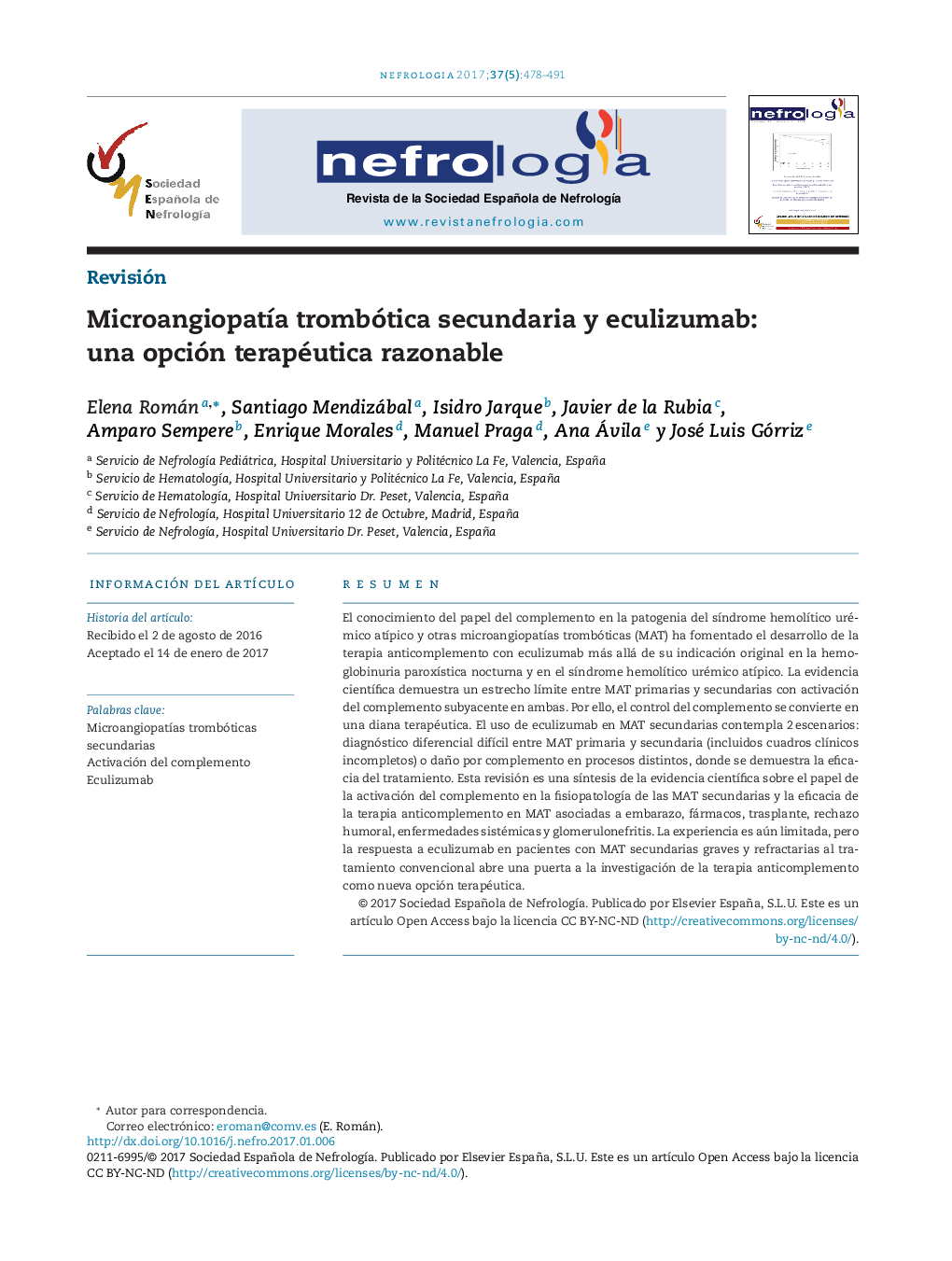| Article ID | Journal | Published Year | Pages | File Type |
|---|---|---|---|---|
| 8774714 | Nefrología | 2017 | 14 Pages |
Abstract
Understanding the role of the complement system in the pathogenesis of atypical haemolytic uraemic syndrome and other thrombotic microangiopathies (TMA) has led to the use of anti-complement therapy with eculizumab in these diseases, in addition to its original use in patients with paroxysmal nocturnal haemoglobinuria andatypical haemolytic uraemic syndrome. Scientific evidence shows that both primary and secondary TMAs with underlying complement activation are closely related. For this reasons, control over the complement system is a therapeutic target. There are 2Â scenarios in which eculizumab is used in patients with TMA: primary or secondary TMA that is difficult to differentiate (including incomplete clinical presentations) and complement-mediated damage in various processes in which eculizumab proves to be efficacious. This review summarises the evidence on the role of the complement activation in the pathophysiology of secondary TMAs and the efficacy of anti-complement therapy in TMAs secondary to pregnancy, drugs, transplant, humoral rejection, systemic diseases and glomerulonephritis. Although experience is scarce, a good response to eculizumab has been reported in patients with severe secondary TMAs refractory to conventional treatment. Thus, the role of the anti-complement therapy as a new treatment option in these patients should be investigated.
Keywords
Related Topics
Health Sciences
Medicine and Dentistry
Nephrology
Authors
Elena Román, Santiago Mendizábal, Isidro Jarque, Javier de la Rubia, Amparo Sempere, Enrique Morales, Manuel Praga, Ana Ávila, José Luis Górriz,
